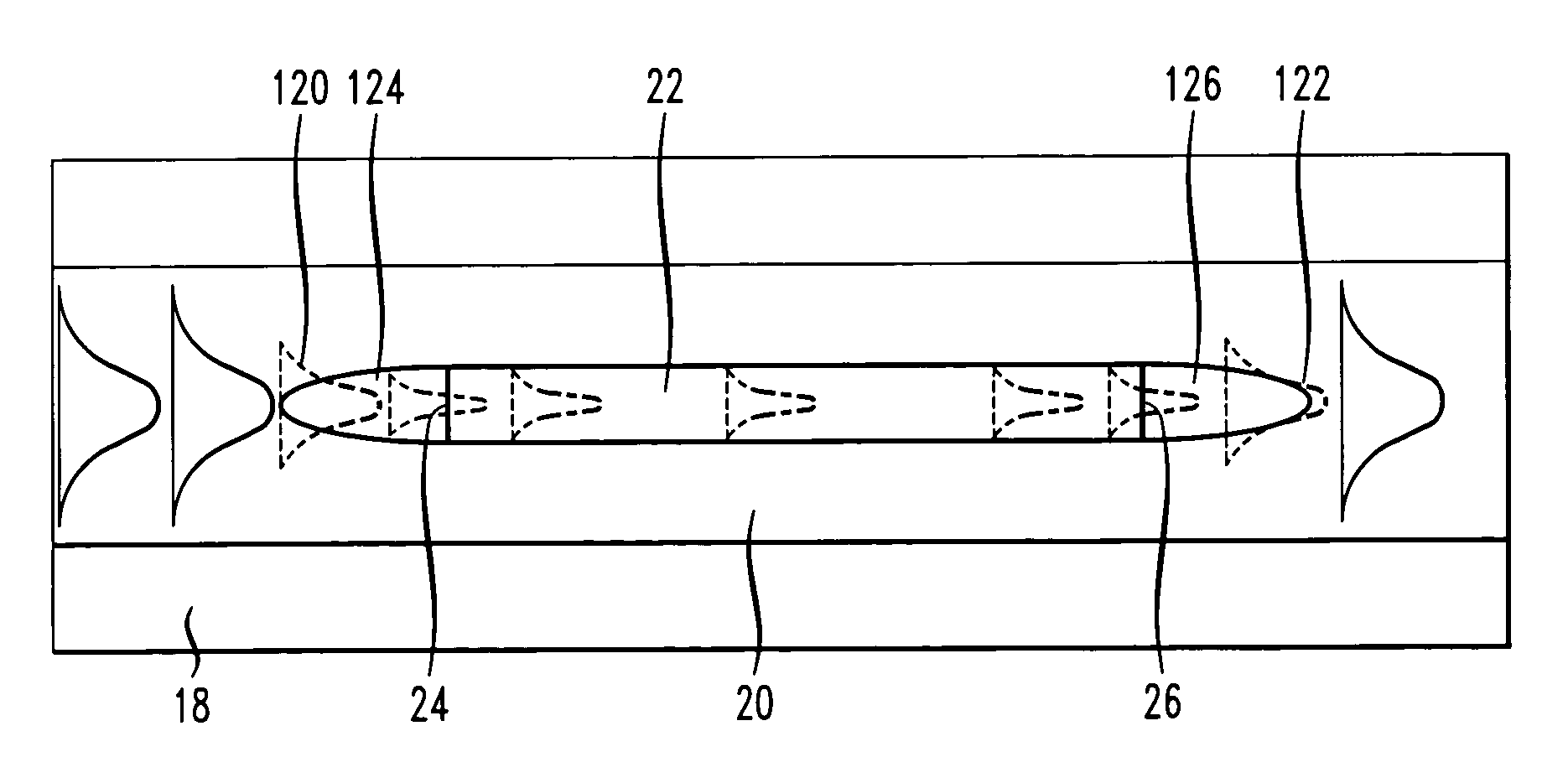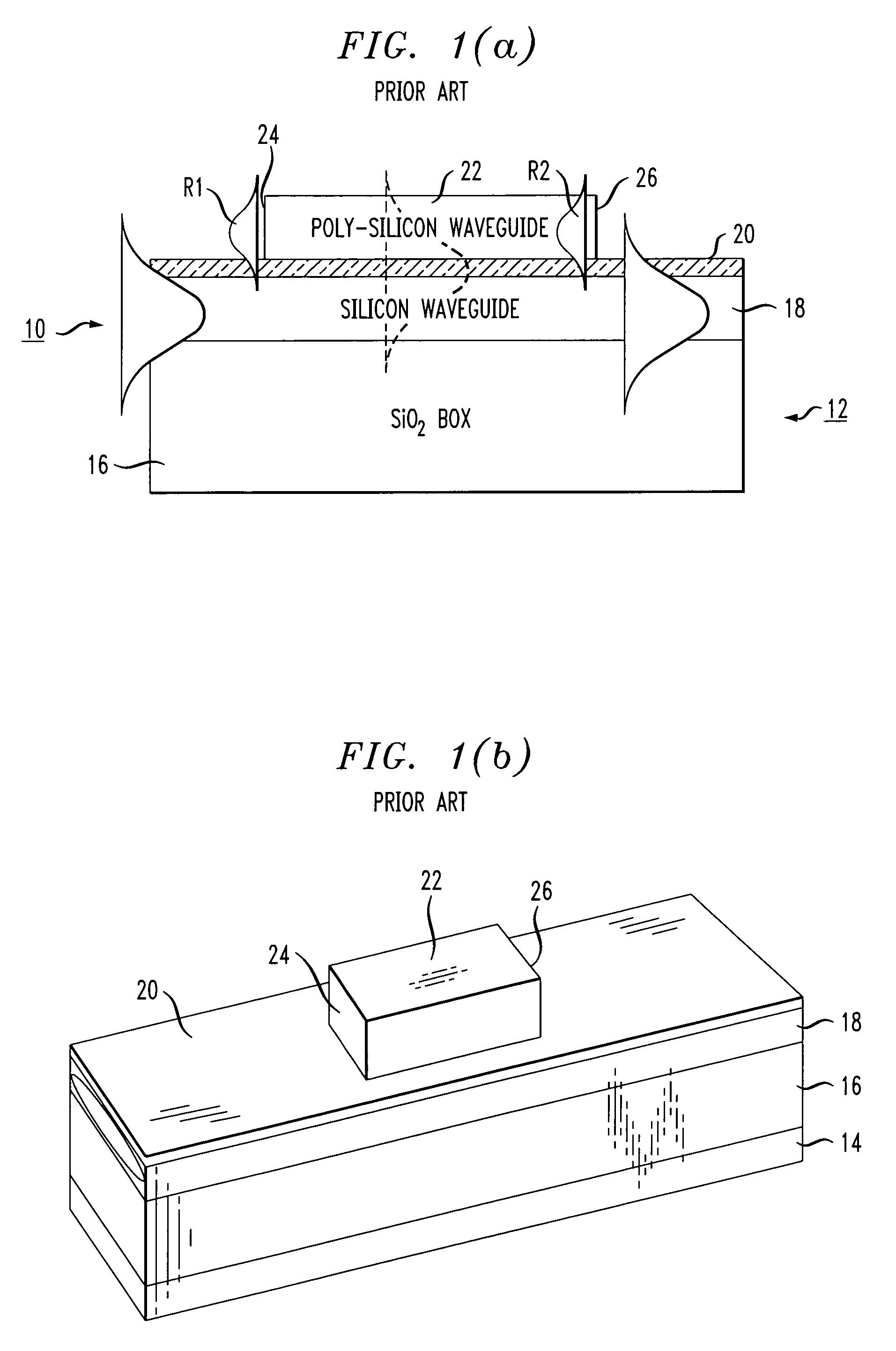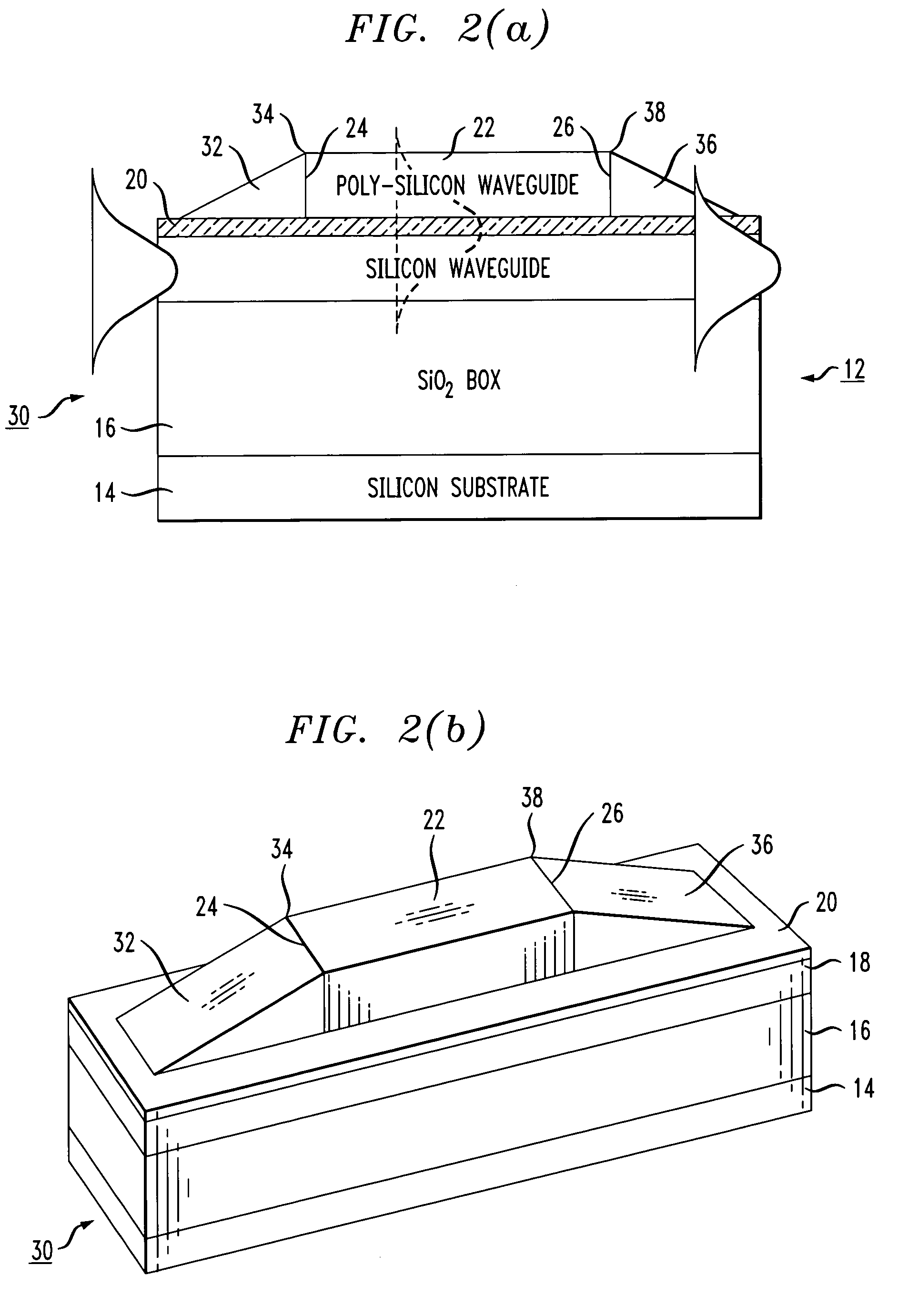Mode transformation and loss reduction in silicon waveguide structures utilizing tapered transition regions
a transition region and waveguide technology, applied in the direction of optical waveguide light guide, instruments, optics, etc., can solve the problems of loss of rib or ridge waveguide formed in soi platform, etc., and achieve the effect of reducing the loss of optical mode mismatch between the silicon surface layer and the rib
- Summary
- Abstract
- Description
- Claims
- Application Information
AI Technical Summary
Benefits of technology
Problems solved by technology
Method used
Image
Examples
Embodiment Construction
[0022]FIG. 1(a) contains a side view of an exemplary rib waveguide structure 10, this structure being described in detail in our co-pending application Ser. No. 10 / 146,321, filed May 15, 2002 now U.S. Pat. No. 6,898,352. For the purposes of the present invention, the configuration as shown in FIG. 1(a) particularly illustrates the presence of reflections at the input and output of the rib waveguide. An isometric view of the same rib waveguide structure 10 is illustrated in FIG. 1(b). As shown, structure 10 comprises an SOI platform 12 including a silicon substrate 14, a buried dielectric layer 16 and a relatively thin upper silicon layer 18. In this particular example, a relatively thin dielectric layer 20 is disposed across the top surface of upper silicon layer 18 and a rib waveguide structure 22 is formed along a portion of dielectric layer 20. The propagation of an exemplary optical signal is shown in FIG. 1(a), where the optical signal is first propagating within upper silicon ...
PUM
 Login to View More
Login to View More Abstract
Description
Claims
Application Information
 Login to View More
Login to View More - R&D
- Intellectual Property
- Life Sciences
- Materials
- Tech Scout
- Unparalleled Data Quality
- Higher Quality Content
- 60% Fewer Hallucinations
Browse by: Latest US Patents, China's latest patents, Technical Efficacy Thesaurus, Application Domain, Technology Topic, Popular Technical Reports.
© 2025 PatSnap. All rights reserved.Legal|Privacy policy|Modern Slavery Act Transparency Statement|Sitemap|About US| Contact US: help@patsnap.com



